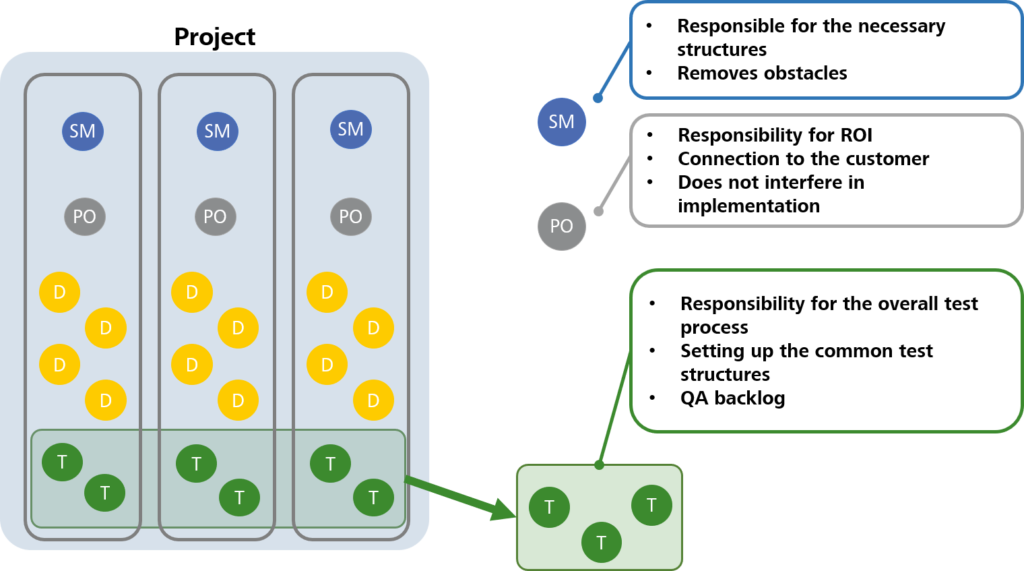In the first and second part, we successfully completed the agile transition of the test manager’s responsibilities, and we proved that small scrum teams no longer require a test manager. Several scrum teams working together on the same product pose another challenge. Can the previous observations made with respect to a small scrum project with a single team also be adopted for large projects?
Do we need a test manager for large scrum projects?
In many companies that use scrum, several teams work together on the development of the same product. There have already been some thoughts regarding scaled scrum on the company level and how it is possible to comply with agile principles even as the level of complexity increases. In this context, Boris Glober identifies two problematic areas: “compliance with the scaled scrum framework” and “scaling of the requirements process”. To solve this, he introduces additional roles: the company scrum master and the company product owner, who assist all the scrum masters and product owners of the project. Both roles coordinate with their counterparts in the individual scrum teams, and they manage the scrum tools on the company level, such as the company product backlog and the company scrum board.
Can this concept be adopted for testing as well, i.e. do we need something like a company test owner or a company QA master? The purpose of this new tool would be the coordination of and responsibility for the overall, integrative testing process, establishing the necessary common test structures, and filling the backlog with stories, tasks and incidents relating to QA.

For projects with a manageable number (2 to 8) of scrum teams, this kind of coordination can be done within the framework of the general coordination meeting, the scrum of scrums. If the coordination becomes more test-specific and time-consuming, it is advisable to establish a separate test meeting as required. Each team sends a team member with the necessary test know-how to this meeting. If the number of teams is higher, or if coordination between several projects is required with respect to QA issues, the guilds can again be used for this purpose. The guilds collect examples of best practices that they provide to all the projects, or they appoint coaches who bring agile testing methods to new projects. The guild masters agree on important decisions and moderate the scrum teams wherever it is necessary to define common rules and solutions.
We can conclude that agile companies no longer need a test manager, even for large projects. However, this is possible only by way of a complete agile transition of the test manager’s responsibilities because each of the test manager’s responsibilities—in particular with respect to communication and coordination—has to be matched with an agile tool.